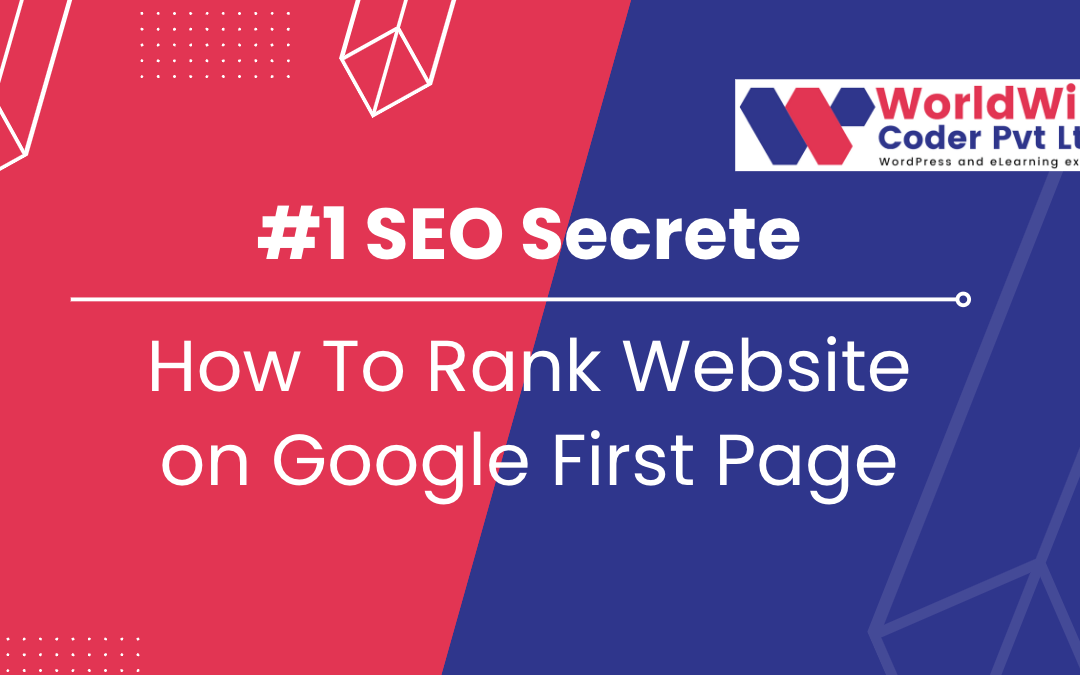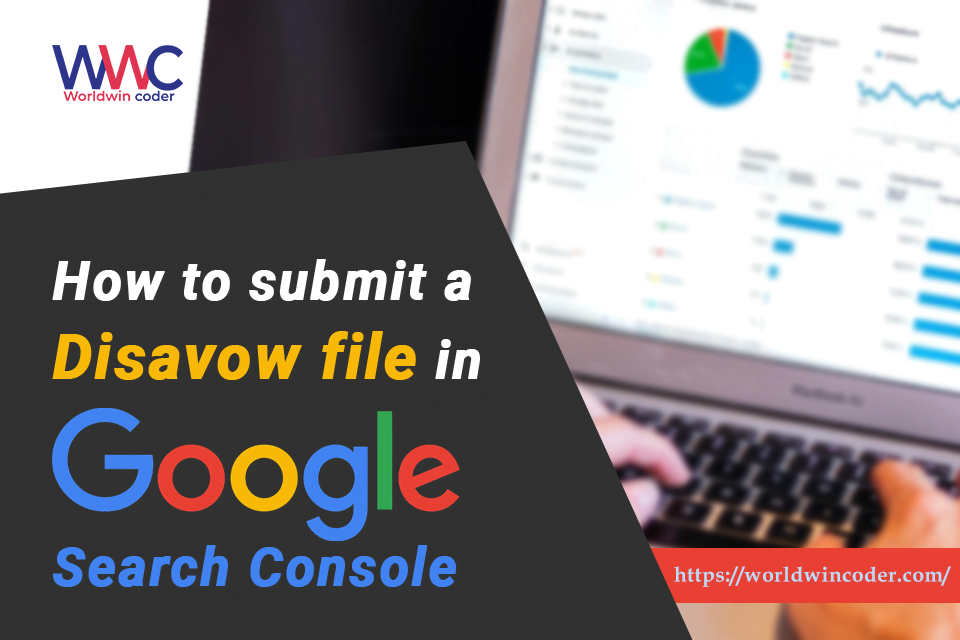
by Vishavjeet | Jan 14, 2023 | blog, Digital Marketing
Rank website on Google first page is crucial for any business or individual looking to establish an online presence. With over 3.5 billion searches made every day on Google, appearing on the first page is a surefire way to increase visibility and drive traffic to your website. One of the most important things to understand when trying to rank website on Google first page is that there is no one-size-fits-all approach. However, there are several key factors that will influence your website’s ranking.
On-Page Optimization
- On-page optimization is the process of optimizing the content and structure of your website to make it more appealing to search engines. This includes using relevant keywords in the title tag, meta description, and throughout the content of your website.
- In addition to using relevant keywords, it is also important to make sure your website has high-quality content that is both informative and engaging. This will not only help your website rank higher in search results, but it will also keep visitors engaged and coming back for more.
On-page technical SEO
- On-page technical SEO is the process of optimizing the website’s code to make it more search engine friendly. This includes optimizing the website’s meta tags, header tags, images and website’s load time.
- Make sure your website is mobile-friendly and easy to navigate. Use schema markup, this will help search engines to understand the website’s content better.
What’s Your Website SEO Challenge Right Now?
Let’s Talk
Off-Page Optimization
- Off-page optimization is the process of building high-quality backlinks to your website from other relevant and authoritative websites. Backlinks act as a vote of confidence for your website, signaling to search engines that other websites consider your content valuable.
- The more high-quality backlinks your website has, the more likely it is to rank higher in search results. When building backlinks, it is important to focus on quality over quantity. A few high-quality backlinks from relevant and authoritative websites will be much more beneficial than a large number of low-quality backlinks.
Optimizing for User Experience
- In addition to on-page and off-page optimization, it is also important to focus on optimizing for user experience. This means making sure your website is easy to navigate, loads quickly, and is mobile-friendly.
- Search engines are increasingly placing a greater emphasis on user experience, so it is important to make sure your website is designed with the user in mind.
What’s Your Website SEO Challenge Right Now?
Let’s Talk
Use Google Search Console
- Google Search Console is a free tool offered by Google that allows you to monitor the performance of your website in Google search. With this tool, you can see how often your website is appearing in search results, which keywords are driving traffic to your website, and which pages are receiving the most clicks.
- By using this tool, you can identify any issues with your website, such as crawl errors or broken links, and take action to fix them. This can help to improve your website’s ranking in search results.
Use Google Analytics
- Google Analytics is a free tool that allows you to track the traffic and engagement metrics of your website. With this tool, you can see how many people are visiting your website, where they are coming from, and what pages they are viewing.
- By using this tool, you can identify which pages on your website are performing well and which are not. This can help you to optimize your website for better engagement and conversion rates.
Optimize for Local SEO
- If you want to target local keywords, make sure your website is optimized for local SEO. This means including your business name, address, and phone number (NAP) on your website, as well as creating a Google My Business listing and ensuring that all of your business’s information is accurate and consistent across the web.
Finally, Optimize for Featured Snippets, try to target the featured snippet for your target keyword, this will help you to grab the top spot on google.
It’s important to remember that SEO is a continuous process and it may take time to see the results, and it’s also important to keep in mind that the algorithms that determine search rankings are constantly changing, so what works today may not work tomorrow.
What’s Your Website SEO Challenge Right Now?
Let’s Talk

by Vishavjeet | Nov 17, 2020 | blog
How to Submit the Disavow file in Google Search Console
A flawless backlink profile is vital to enhancing rankings and gaining online exposure, as any experienced webmaster understands. This ensures you ought to have a decent number of links from websites that really are important to your business, local links, and links between small and high-level sites should really be balanced. It takes time to create the same kind of profile, and often, several poor-quality links will make you sweat. Google has, therefore, deployed the Disavow file Ties Feature in its Search Console.
Download your backlink profile
You also need to figure out whether websites are linking back from you before disavowing any ties and whether these links are damaging your account. To do the same, start through using resources like Ahrefs, Majestic, or Moz Open Site Explorer to download the full backlink profile.
Verify Your Site
You would like to attach and check your site inside the Search Console before we get into the feature. Go to the upper center of your dashboard drop-down and press “add land.”

Full backlink audit
It’s imperative to consider all the ties and review them when you’ve a detailed transcript. This part could be a little complicated, and it is better to approach an SEO expert and ask them to carry out a risk assessment if you are not sure of the consistency of the referred domains. Google itself has said that if you understand what you’re doing and you can just use the Disavow Feature, otherwise it can eventually wind up damaging the site.
Integrate Search Console with Google Analytics
Analytics provides you with sales conversion data; Search Console provides you with a look at the understanding of underlying search variables for that data. Connecting the two gives you a major monitoring boost.
Create and upload your disavow file
You should begin questioning ways to delete them when you’ve already found the connections that really can damage your backlink profile. In principle, you always should first try to contact the site owner to let them know that you want to delete your connection, but this is practically impossible, as spammy websites do not exactly provide good customer service. If you can monitor the link and understand the webmaster, it is always advisable to try and fully delete the link, though.
How has the click-through rate shift completed over period influenced targets? How does the SERP’s average location impact sessions or time-on-page? You will evaluate every one of these special relationships using the Linking Search Console and Analytics. In order to evaluate these very same metric partnerships when broken down by region, computer, and searching question, you could also use the Countries document, the Devices report, and the Queries report.

Look for the flaws
The new report contains all of the same details as the old report, plus comprehensive crawl status data from either the Index, per Google. What kind of magnificent perspectives can you glean from that kind of latest study (but obviously the same one)? Let us just walk through the sections of each one.
Error
It operates through several possible mistakes on the web because you can go through it and make corrections. This may include adjustment problems, errors in redirection, inconsistencies in robot.txt, 404s, and a host of many others.
Warnings
An alert means that a website is indexed, but robots.txt has prevented it. Google recommends the ‘no-index’ tag over robots.txt if you’d like to block a page from either the index. When other pages connect to it, a server blocked via robots.txt could still start showing up in the index. These alerts give you the chance to get it through certain pages and appropriately de-index them.
Valid Pages
There are some of these pages in the index. You can make absolutely sure that you add certain URLs to your sitemap if you ever see “Indexed, not published to sitemap status.” ‘Indexed; assume canonical labeling’ implies that the page contains duplicate URLs and should be marked as authoritative.
Excluded Pages
There are links prevented by a ‘noindex’ order from the index, a page elimination tool, robots.txt, a crawling phenomenon because they are redundant content, etc.

Monitor your site’s performance
If the document is uploaded and the ties have also been disavowed, you might be inclined to suggest it’s all done, the poor links have vanished, and from here, it was all smooth sailing to #1 in SERPs. Ok, not truly. SEO is complex, and nobody really understands how well the Google algorithm works, so you can keep monitoring the success of your website to see whether, if any, disavowing the links seemed to have a positive effect.



